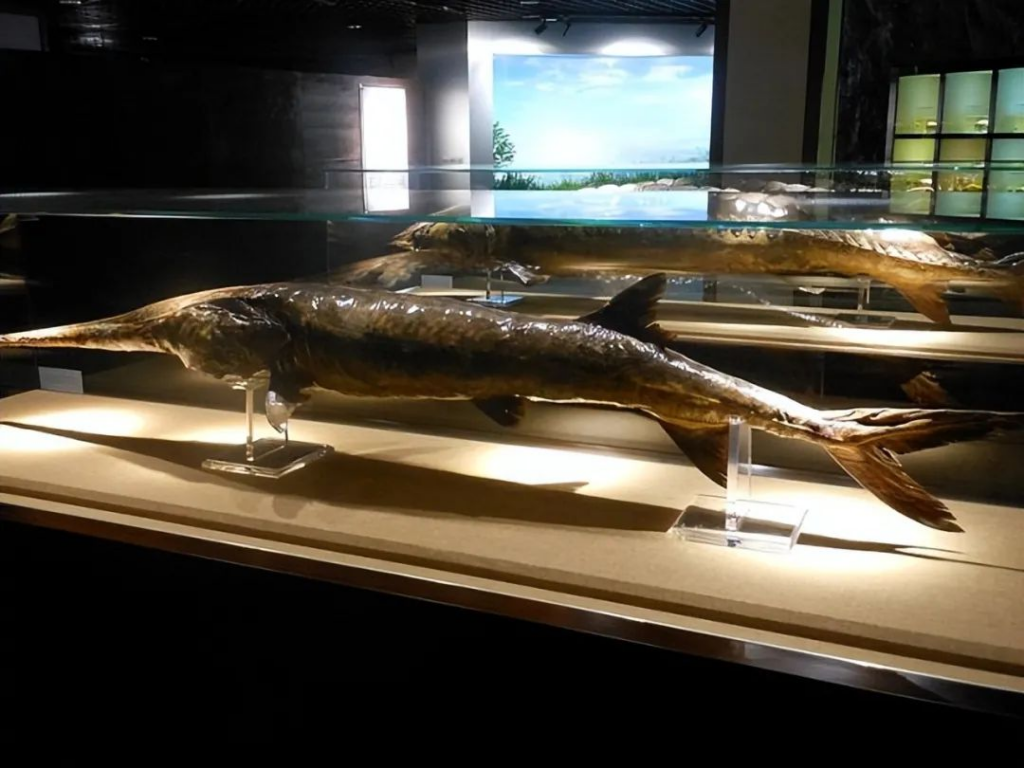In 2020, Chinese scientists announced that the Yangtze giant sturgeon, once common in the Yangtze River, has now been declared extinct. This was the first confirmed extinction of the year. Researchers from the China Institute of Fisheries, led by Zhang Hui, reported in early 2020 that the sturgeon may have become extinct between 2005 and 2010. Their study was published in the Science of the Total Environment journal in March 2020, meeting the criteria set by the International Union for Conservation of Nature.
Impact of Human Activity on the Sturgeon
The Yangtze giant sturgeon, like many aquatic species, faced threats from pollution, overfishing, and habitat loss. There are no remaining individuals in captivity, so breeding programs to restore the population were not possible. This giant fish, often called the “elephant fish” because of its prominent nose, can grow up to 7 meters in length. It is one of the largest freshwater fish in the world, alongside species like sturgeon and alligator gar. The sturgeon had survived on Earth for over 150 million years, dating back to the time of the dinosaurs. It was often called the “panda of the water.”
In the 1970s, overfishing in the Yangtze River heavily impacted the species. In 1981, the construction of the Gezhouba Dam reduced the population by half. Like many aquatic species, the sturgeon was caught in the conflict between human development and habitat conservation.

The Role of Dams in the Sturgeon’s Extinction
The dam blocked the sturgeon’s migration route to upstream breeding areas. In 1989, the species was officially listed as “threatened.” However, this came too late. Experts noted that the dam hindered the sturgeon from breeding, ultimately leading to its extinction. The last confirmed sighting of the sturgeon occurred in 2003. Zhang Hui and his team have gathered enough evidence to conclude that the species is now extinct.
A Call for Action to Save Other Endangered Species
While this discovery is disheartening, Zhang Hui and his colleagues hope it will inspire efforts to save other endangered species, such as the Yangtze alligator. He emphasized that saving the Yangtze alligator and other endangered species from extinction will require collective action from the public.
The Yangtze River: A Hub of Biodiversity

The Yangtze River originates in the Tibetan mountains and is the longest river in Asia, stretching over 6,300 kilometers. It plays a crucial role in Chinese life, tourism, business, and agriculture. The Yangtze River basin is one of the most biodiverse regions on Earth, home to hundreds of species of fish, wildlife, amphibians, and reptiles.
However, like many other countries, China faces a conflict between commercial and industrial interests and the need to protect the environment. It is a challenge to protect these vital ecological regions for future generations.
Zhang Hui and his team stress in their report that “protecting endangered fish species in the Yangtze is urgent.” There has been no comprehensive survey of the Yangtze River since 1975. Researchers lacked a detailed understanding of the fate of endangered species in the river until recently. This long gap in research has prevented scientists from finding the best ways to ensure the survival of these species.
The Ongoing Threat to Global Species
According to the World Wildlife Fund (WWF), many species are currently at risk, including rhinos, certain frogs, leopards, gorillas, and sea turtles. It is still unclear whether governments have the determination and resources to save these species.
While the Yangtze giant sturgeon’s fate is tragic, there is still hope. This loss does not have to become the template for other endangered animals and marine life. Perhaps this is the only ray of hope we can find in this unfortunate situation.



















